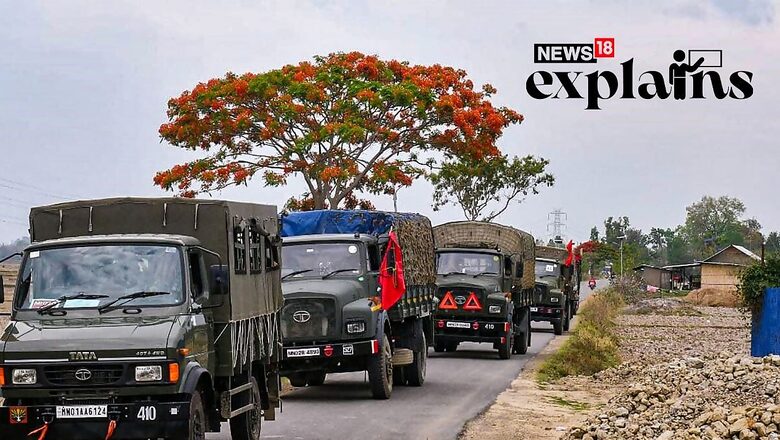
views
The Manipur government had earlier issued a “shoot at sight” orders as violence in the state had spread to capital Imphal. Meanwhile, life started limping back to normalcy under the watchful eyes of army drones and helicopters deployed for aerial reconnaissance as curfew was relaxed on Sunday in parts of Manipur which witnessed bloody ethnic rioting over the last few days.
People were seen coming out in large numbers to buy food, medicines and other essential commodities during the curfew relaxation period from 7 am to 10 am in riot-affected Churachandpur town. Army and Assam Rifles columns conducted a flag march through the town as soon as the curfew relaxation ended at 10 am. In all some 120-125 Army columns have been deployed in the entire riot-hit state, PTI reported.
Amid the developments, let’s understand what a shoot-at-sight order is:
When is a Shoot and Sight Order Issued?
In India, shoot-at-sight orders are a contentious and uncommon type of law enforcement. Authorities issue them when they believe there is an imminent threat to public order or security and that the use of lethal force is required to prevent it, as per reports.
The directives allow police or other security forces to shoot anyone who defies the orders without warning or even attempting to apprehend them. Orders to’shoot at sight’ are typically granted for a short time and in specific places where there is a significant potential of violence.
What is the Legal Basis of Such an Order?
According to a report by Indian Express, under Sections 41-60 and 149-152 of the CrPC, 1973, a “shoot-at-sight” or shooting order may be issued in accordance with the legislative authorities relating to the arrest or prevention of offences or the disbandment of unlawful assemblies.
More precisely, Section 46 (2) of the CrPC authorises the use of force during an arrest. The law states that if a person “forcefully resists the attempt to arrest him or attempts to evade the arrest, such police officer or other person may use all means necessary to effect the arrest.”
Section 46(3), however, limits this executive power by stating that the provision does not grant the ability “to cause the death of a person who is not accused of an offence punishable with death or imprisonment for life,” the report says.
Furthermore, Section 3(a) of the Armed Forces Special Powers Act of 1958, as amended by the Armed Forces (Assam and Manipur) Special Powers Amendment Act of 1972, gives the armed forces the authority to use force in “disturbed areas.” A notification in the Official Gazette declaring an area “disturbed” may be issued by the “Governor of the State, the Administrator of that Union Territory, or the Central Government, as the case may be.”
Furthermore, sections of the Indian Penal Code of 1860 address this issue. According to Section 81 of the IPC, “nothing is an offence merely by reason of its being done with the knowledge that it is likely to cause harm, if it is done without any criminal intention to cause harm, and in good faith for the purpose of preventing or avoiding other harm to person or property.” Furthermore, Section 76 exempts such acts if performed by a person “who is, or who believes himself to be, bound by law to do it due to a mistake of fact and not due to a mistake of law in good faith,” as per the Indian Express report.
The illustration to Section 76 IPC goes so far as to imply that if a soldier “fires on a mob by order of his superior officer, in accordance with the commands of the law,” he has committed no crime.
More notably, Section 144 of the CrPC authorises the employment of broad powers in dealing with urgent cases of “apprehended danger” or nuisance by issuing orders.
Section 144(3) of the Act authorises curfew orders to be issued in the case of a “specific individual,” “persons residing in a particular place or area,” or “the general public when frequenting or visiting a particular place or area.” The executive frequently issues “shoot-at-sight orders” using the authority granted to it by Section 144.
With inputs from PTI
Read all the Latest Explainers here

















Comments
0 comment